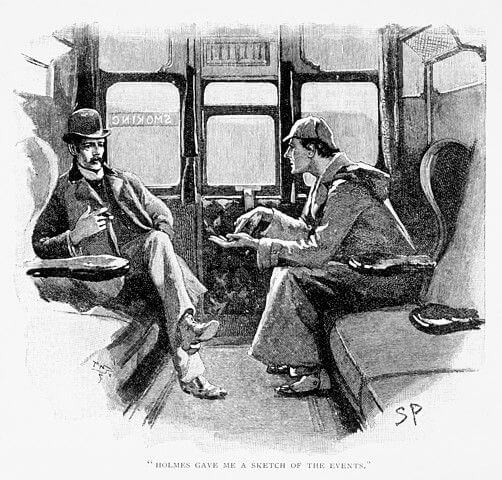Book Review: LOCK AND MORI By Heather W. Petty
Sherlock Holmes is big right now. To be frank, he never went away. Every few years, a new TV version, or a new movie, brings the character back to life, along with his long-suffering sidekick/good, wise friend, Watson. Sherlock Holmes has a large, enthusiastic, and sometimes possessive following, and many of these Baker Street enthusiasts have approved of the adaptations, particularly the recent BBC version (Sherlock, 2010) with Benedict Cumberbatch, which reinvented Holmes for the 21st century. Sherlock Holmes in this incarnation describes himself as a sociopath, and he has been claimed by the National Autistic Society as one of their own. The 2009 movie, Sherlock Holmes, in which Robert Downey, Jr. takes on the role of the eponymous sleuth, presents us with Holmes as an action hero, with Irene Adler as the love interest. Sherlock Holmes is truly a man for all seasons (and none).
The popularity of these adaptations shows what a grip this character still has on the imagination, and each success spawns a further incarnation of the once Victorian, pipe-smoking, cocaine-taking, violin-playing hero.
But Sherlock Holmes meets Twilight? Is this a step too far? Lock and Mori, by Heather W. Petty, is set in modern-day London. Sherlock Holmes is a super bright, emotionally awkward teenager who befriends the troubled teenage—and female—Moriarty. The character of Moriarty is the book’s unique selling point. Moriarty is a girl—part hero, part anti-hero—from a troubled home, with a father who has turned into a violent drunk since the death of his wife. Lock and Mori is the first novel in a trilogy that explores the relationship between Sherlock Holmes (Lock) and his arch-nemesis Moriarty (Mori).
There is a murder in Regent’s Park, and it is soon clear that there is a serial killer on the rampage. Lock and Mori team up to solve the murder. They fall in love, but Mori is keeping secrets. Will they solve the mystery, and will their relationship survive?
So how does this latest Sherlock Holmes work? Mori is an interesting character, damaged by a seriously bad home background that gives her the potential to become the opponent rather than the ally of the hero. Lock is more problematic. Petty has no problem creating an attractive character who is interestingly evasive and intelligent, but this Sherlock is too emotionally accessible. After a promising start, he becomes little more than the inaccessible romantic hero who can be traced through literature from Romeo and Juliet to Mills and Boon to the Twilight saga. (Though to be fair, Lock is interested in blood, but he doesn’t want to drink it.) In other words, he isn’t really Sherlock Holmes; he is just another romantic hero.
Mori is more successful here than in the original books, in which Moriarty was really no more than a narrative device that allowed Arthur Conan Doyle to kill off his increasingly burdensome protagonist. Moriarty was never a major character and made very few appearances in the canon, so Petty has a clean slate from which to create the character.
The characters of Watson and Mycroft appear, albeit briefly. There is little development here, and it will be interesting to see how Petty will use them in the next books.
The narrative has the potential to grip, and in places, does, but the murder mystery at the centre of the novel is predictable and produces no real surprises. The relationship between Lock and Mori is the narrative focus, and while this is not a fatal flaw, a bit of Holmesian ingenuity in solving the apparently unsolvable would have added a missing dimension to the book.
The question remains: is this Sherlock Holmes? The answer: not as we know him. Will the intended audience like it? Almost certainly. There is adventure, some scary bits, enough torrid romance to appeal to most Twilight fans, and an ambiguous ending that suggests the next book is already well underway.
And in the graveyard in Minstead where Conan Doyle is buried, one famous occupant will surely soon become known as whirligig Arthur.
—Danuta Reah

